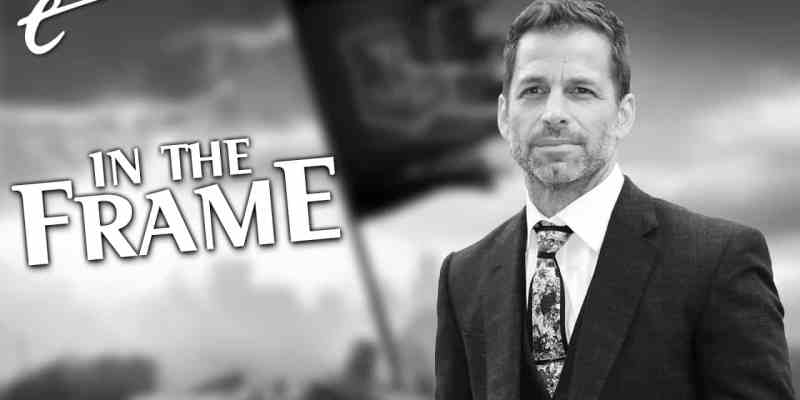There is a clear thematic arc running from Man of Steel through to Zack Snyder’s Justice League, and that arc is a meditation on the nature and function of superhero movies.
Man of Steel arrived in cinemas in June 2013, just a year after the release of Christopher Nolan’s The Dark Knight Rises and Joss Whedon’s The Avengers. It exists in the context of Christopher Nolan’s groundbreaking Dark Knight trilogy and the nascent Marvel Cinematic Universe. Nolan helped choose Snyder to direct Man of Steel and received a story credit on the finished film. The film’s depiction of Kansas neatly mirrors that of the rural heartland in Nolan’s Interstellar a year later.
It arrived at a time when superhero cinema was largely shaped and defined by the trauma of 9/11. Dana Stevens argued that The Dark Knight did “more nuanced thinking” about the War on Terror than the Bush administration itself. The Avengers climaxed with a fantastical attack on New York City through holes torn in the sky. Thor: The Dark World featured a collision-based aerial attack on the golden towers of Asgard. Avengers: Age of Ultron would feature a city itself turned into an aerial weapon.
At the time that Man of Steel was released, superhero cinema seemed obsessed with dropping superheroes into something resembling the real world and collapsing the real world into superhero stories. Even more recent city films like Avengers: Infinity War and Avengers: Endgame are saturated with imagery evocative of 9/11 — holes in the sky over New York City, ruined pairs of towers surveying desolate landscapes, bodies thrown from a height like macabre sacrifices.

Of course, it wasn’t just the imagery of 9/11 itself. A lot of superhero cinema tried to engage directly with the politics of the War on Terror. Iron Man took a cue from Warren Ellis and Adi Granov’s Extremis and moved Tony Stark’s (Robert Downey Jr.) origin story to the Middle East. In Iron Man 2, Stark found himself testifying before Congress about his superhero persona, boasting, “I have successfully privatized world peace.”
The Captain America franchise repeatedly couched its superheroes in the iconography of contemporary politics. Captain America: The Winter Soldier touched on issues like the surveillance state and drone warfare, while Captain America: Civil War meditated on the notion of unilateral foreign intervention. As such, Man of Steel and Batman v Superman were not unique in embracing the question of what the post-9/11 superhero genre looked like.
Of course, there are restraints on how skillfully the superhero genre can navigate this War on Terror quagmire. The MCU hit those boundaries in its storytelling, with movies like Age of Ultron establishing firm limits on what its heroes could do and movies like Civil War insulating those characters from any uncomfortable questions that might arise. After all, interrogating the use of power also means interrogating the associated power fantasies, and that could shatter the illusion.
When superheroes crash into the real world, one of them has to give – and it’s usually superheroes. For all that The Winter Soldier could be read as a commentary on the surveillance culture that emerged in the wake of 9/11, the movie is quick to exculpate the United States government or American interests by insisting that it was orchestrated by a secret conspiracy of foreign war criminals that are basically the Nazis from the Second World War – but also not really Nazis.

In the world of The Winter Soldier, it is not the surveillance state itself that is the problem, but the idea that the surveillance state might fall into the wrong hands. Those wrong hands are never the American government, particularly given Marvel Studios’ long-standing relationship with the Department of Defense, to the point that Captain Marvel is an Air Force recruitment film. Thor: Ragnarok is arguably a better exploration of these themes because it couches them in pure fantasy.
Man of Steel and Batman v Superman make this tension part of the narrative. In both Man of Steel and Batman v Superman, the heroes operate in a world defined by other power structures. The military is a major part of Man of Steel, represented by Colonel Nathan Hardy (Christopher Meloni) and Lieutenant General Calvin Swanwick (Harry Lennix). Batman v Superman finds Superman (Henry Cavill) dragged before Congress to testify before Senator June Finch (Holly Hunter).
Man of Steel doesn’t use metaphors. When Superman butts against the government, he doesn’t confront fictional organizations like S.H.I.E.L.D. or Hydra. He confronts officers and elected officials. Superman doesn’t brush against vague metaphors for drone warfare; he destroys actual drones in both Man of Steel and Batman v Superman. In Civil War, the death of foreign citizens leads to cool banter-driven airport fights. In Batman v Superman, it leads to punditry and public hearings.
Man of Steel and Batman v Superman explore what the unchecked superhero power fantasy means when applied to a recognizable world. The results are uncomfortable. Kahina Ziri (Wunmi Mosaku), a young black woman, wants to ask Superman “how he decides which lives count and which ones do not.” The choice of language is pointed. At one point, Superman visits a part of Gotham aggressively policed by Batman (Ben Affleck) and discovers it is an impoverished minority community.

Man of Steel and Batman v Superman suggest that when narratives try to force superheroes into that 9/11 paradigm – as the genre has done for over a decade – the results are either nightmarish or facile. Batman v Superman suggests that this template frames heroes as either an imagined foreign threat (like Superman) or an extension of paranoid state power (like Batman). Batman’s paranoia over Superman mirrors that of Dick Cheney over terrorism or Donald Trump over immigration.
This approach is not sustainable. In fact, it’s actively toxic to superheroes. Batman v Superman ends in defeat for everybody. Superman is dead, unable to function in a world that insists on filtering him through the prism of grounded contemporary politics. Batman feels responsible for this. There is a threat looming on the horizon, and it’s one that the surviving heroes are unprepared to face. Superman could never exist in the real world — or a world recognizable as real.
This is what makes Zack Snyder’s Justice League so interesting. It is a much lighter and more fantastical movie than either Man of Steel or Batman v Superman. This was apparently the plan from the outset, although it seems to have been accelerated given the vocal reaction to Batman v Superman. It is very much a reconstruction that exists in response to the pointed deconstruction of Man of Steel and Batman v Superman. It’s no wonder a key chapter is titled “All the King’s Horses.”
Justice League is also about the reinvention of Superman. At its core, Justice League is a story about transcendence. It is a story about moving beyond the mundane grounded realities of so many modern superhero stories from The Winter Soldier to Civil War to Man of Steel to Batman v Superman. It is a story about Batman being inspired by Clark to build something worthy of Superman and to create a world in which Superman can not only thrive, but is completely essential.

Justice League eschews a lot of the grounded trappings of Man of Steel and Batman v Superman. It is not a world of human or mortal concerns. It takes place in a world beyond such things. There are no politicians here. The president of the United States (Patrick Wilson) from Batman v Superman has no influence or say on the events of the movie. Lieutenant General Calvin Swanwick is no longer a soldier or politician but is revealed to have been a superhero (the Martian Manhunter) all along.
Everything in Justice League takes place at a greater remove from a recognizable world. Early in the movie, a group of “reactionary terrorists” attack the Old Bailey, although their motivations are framed in abstract terms. When Steppenwolf (Ciarán Hinds) establishes a base in an abandoned Soviet city at the site of a mid-to-late-1980s nuclear disaster, it is not the real-life Chernobyl but the fictional Pozharnov.
Indeed, Steppenwolf is exactly the sort of problem superheroes are very good at solving. He is from “the Fourth World,” a “New God,” and implicitly positioned by Justice League as a demonic figure. Batman v Superman pit both Batman and Superman against problems superheroes cannot fix. It is impossible for superheroes to punch their way out of the decaying social trust or rampant xenophobia, but the evil Darkseid (Ray Porter) provides an embodiment of fascism that characters can punch in the face.
Justice League consciously riffs on the anxieties of the superhero genre, which has long been insecure about its perceived juvenility. Indeed, the trilogy from Man of Steel to Justice League plays on key stories from the era when comics worked through this same anxiety, from Frank Miller’s The Dark Knight Returns to The Death of Superman.

This era, running from the late 1980s into the 1990s, is known to fans as “the dark age,” and it is gripped by insecurity. Justice League alludes to this repeatedly. The leader of the film’s terrorists (Michael McElhatton) plans to bring the world “back to the dark ages.” Darkseid and Steppenwolf are emissaries of “the darkness.” In particular, Steppenwolf himself wears armor literally made of knives, like a parody of 1990s comic book characters like Adam-X the X-treme, Salvo, or Vengeance.
Justice League makes a point to push its characters back towards familiar archetypes and away from the more controversial interpretations of Man of Steel and Batman v Superman. Batman no longer uses the machine guns that upset some traditionalist fans, but now uses the grapple hooks and energy weapons that have long been accepted as exemptions. Lex Luthor (Jesse Eisenberg) no longer looks like a real-life tech-bro, but instead resembles more traditional iterations of the character.
This traditionalism is even reflected in how Snyder shot Justice League. Both Man of Steel and Batman v Superman were originally released in traditional widescreen formats. The widescreen ratio recalls the panel layout favored by artists like Bryan Hitch, who defined a lot of the aesthetic of the turn-of-the-millennium grounded and political superhero comics with his work on The Authority with Warren Ellis and The Ultimates with Mark Millar. The 1.33:1 IMAX-inspired aspect ratio on Justice League suggests a more classic and traditional comic panel. It also suggests an older form of filmmaking, the “Academy Aperture,” which was used until the 1950s. It’s more innocent, and it’s openly nostalgic.
As such, even allowing for its transparent sequel hooks, Zack Snyder’s Justice League represents the culmination of a larger arc and more complicated journey for these characters. Taken as a whole, Man of Steel, Batman v Superman, and Justice League literalize a journey for the cinematic superhero genre away from the gritty and grounded trappings of the post-9/11 pseudo-realism that shaped everything from X2: X-Men United through to Civil War.
Man of Steel and Batman v Superman crashed the superhero against a world close enough to reality to make it uncomfortable, but Justice League suggests that maybe it’s okay to let superheroes be superheroes.
